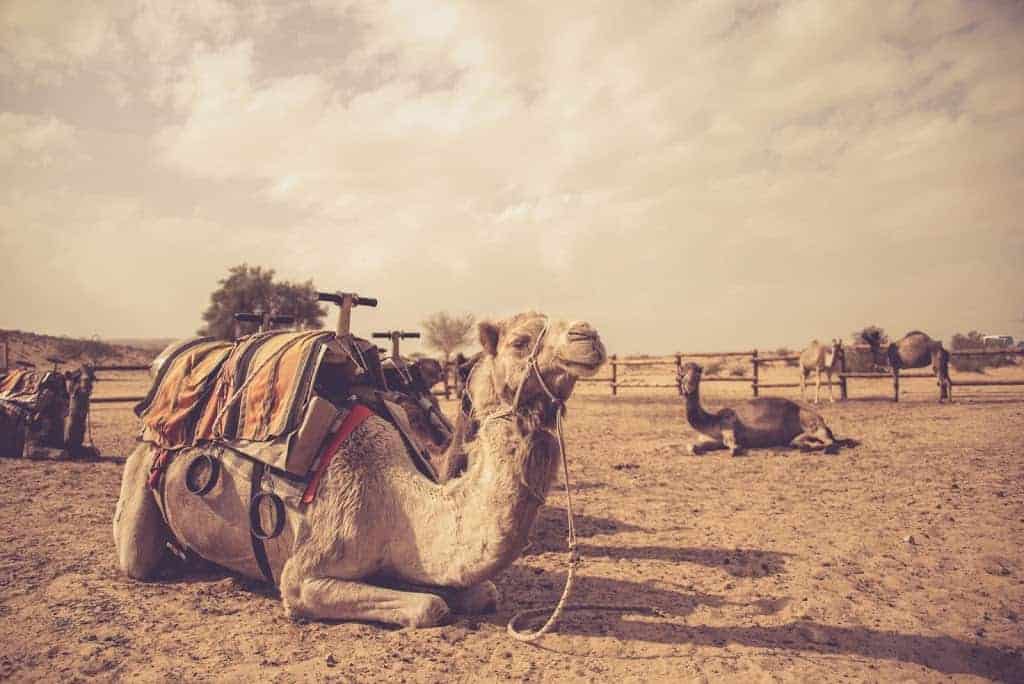Rock hyrax – Basic Info and Where You Can Find them in Israel
The rock hyrax is a medium-sized (4–5 kg) mammal native to Africa and the Middle East. Rock Hyraxes eat a wide variety of plants. And in Israel, you can mostly find them in the mountains.
Note: I shot the featured image at Ein Gedi Nature Reserve.
Table of Contents
Basic Info
The rock hyrax (Procavia capensis), also called rock badger, rock rabbit, and Cape hyrax is commonly referred to in South African English as the dassie. It is one of the four living species of Hyracoidea and the only living species in the genus Procavia. Like all hyraxes, it is a medium-sized terrestrial mammal between 4 kilograms (9 lb) and 5 kilograms (11 lb) in mass, with short ears and tail.
The rock hyrax is found across the entire continent of Africa and the Middle East, at elevations up to 4,200 meters (13,800 ft). It resides in habitats with rock crevices which it uses to escape from predators. It is the only extant terrestrial afrotherian in the Middle East. Hyraxes typically live in groups of 10–80 animals and forage as a group. They have been reported to use sentries: one or more animals take up a position on a vantage point and issue alarm calls on predators’ approach.
The rock hyrax has incomplete thermoregulation and is most active in the morning and evening, although its activity pattern varies substantially with season and climate.
Over most of its range, the rock hyrax is not endangered, and in some areas, is considered a minor pest. Ethiopia, Israel, and Jordan are reservoirs of the leishmaniasis parasite.
Along with other hyrax species and the manatee, this species is closely related to the elephant.
Source: Wikipedia

What do Hyraxes Eat?
Hyraxes can easily climb on trees and walls. Thus they reach and eat different plants. Also, sometimes they eat insects and worms.

Hyraxes in the Bible
The rock hyrax makes a loud sound while moving its jaws as if ruminating. That might be the cause of the misconception in Leviticus that the hyrax chews the cud, while it is not a ruminant.
Leviticus 11:5 (New International Version)
The hyrax, though it chews the cud, does not have a divided hoof; it is unclean for you.
The same idea also appears in Deuteronomy 14:7 (New International Version)
However, of those that chew the cud or that have a divided hoof you may not eat the camel, the rabbit or the hyrax. Although they chew the cud, they do not have a divided hoof; they are ceremonially unclean for you.
So, according to this, they are not Kosher.
And here are two quotes related to where hyraxes live.
Psalm 104:18 (New International Version)
The high mountains belong to the wild goats;
the crags are a refuge for the hyrax.
Proverbs 30:26 (New International Version)
hyraxes are creatures of little power,
yet they make their home in the crags;
As you can see, ancient Israelites were familiar with this species.
Sounds
Since we mentioned different sounds produced by hyraxes, here is a short video by Eyal Bartov, where you can hear them:
Thermoregulation
The body temperature of rock hyraxes is not constant. And it varies in accordance with the environment. The normal temperature is 36.3 C, but it can go up or down in a little more than one degree. That is why usually in the mornings, they lie on rocks.
Thermoregulation in rock hyraxes has been subject to much research, as their body temperature varies with a diurnal rhythm. Animals kept in constant environmental conditions also display such variation, and this internal mechanism may be related to water balance regulation.
Source: Wikipedia

Note: if you want to find additional info about animals and wildlife, check out Zoos and Aquariums in Israel.
Elephant
A common trivia question is: “What animal is related to the Rock hyrax?” As you understood from the subheading, it is the elephant. You can find a diagram at Campbell Biology Australian and New Zealand Edition.
Are Rock hyraxes Dangerous? Do Hyraxes have rabies?
All my encounters with Hyraxes were peaceful. But they are wild animals. Thus in extreme situations, they will attack. They can bite, and yes, hyraxes can pass rabies.
Here is an example, in 2014, a child got a bite from a Rock hyrax in Israel, and doctors decided to give him a rabies vaccine.
Do Rock hyraxes Transmit Diseases to Humans?
In recent years, the spread of the parasite that causes cutaneous leishmaniasis has expanded. The parasite is transmitted to humans by the bite of a sand fly. Studies show that rock hyrax is part of the disease cycle, as it acts as a surrogate for the parasite.
Source: Israel Nature and Parks Authority
Where You Can Meet Rock hyraxes in Israel?
Hyraxes mainly live in the mountain regions. Like Mount Hermon, the Galilee, the Carmel, the Judean Desert, the Negev, and Samaria. And here are several places where I saw them:
Additional Resources
Here are several resources that I created to help travelers:- Trip Planner with Attractions and Itineraries is the page that will help you create your perfect travel route.
- What is the Best Time to visit Israel? To answer this question, we will consider the weather, prices, holidays, festivals, and more.
- Information and Tips for Tourists to Israel will answer the most common questions tourists have about Israel (including safety, passports, weather, currency, tipping, electricity, and much more).
- Israel National Parks and Nature Reserves include a complete list, top ten, map, tickets (Israel Pass, Matmon, combo), and campsites.
- If you are looking for things to do, here are the pages for Jerusalem, Tel Aviv, Haifa, Sea Of Galilee, Akko (Acre), Eilat, Nazareth, Safed (Tzfat), and Makhtesh Ramon.








2 Comments